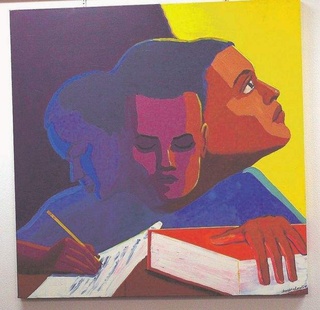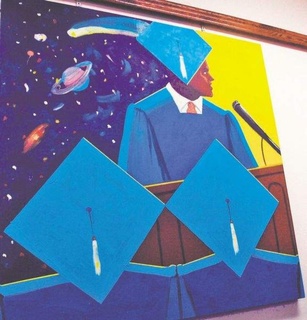Four of every five children and teens that end up in a juvenile justice system have one, or a combination, of the following characteristics:
1. The child or teen is under the influence of alcohol or drugs while committing their crimes
2. The child or teen tests positive for drugs
3. The child or teen is arrested for committing an alcohol or drug offense
4. The child or teen admits having substance abuse problems
The report, Criminal Neglect: Substance Abuse Juvenile Justice and the Children Left Behind, is the most comprehensive study of substance abuse and the state juvenile justice systems. Astonishingly, the report found that up to 75% of incarcerated juveniles have mental health problems and up to 80% have learning disabilities, yet they rarely receive help for these problems either.(1)
Using art therapy to help troubled teenagers and juveniles isn’t something that crosses people’s minds usually. But five drug court participants were lucky enough to be surrounded by people who cared, and by people who thought a little outside of the box.
A juvenile drug court in Louisiana is using art therapy to help transform its teenagers and kids. Five drug court participants created two murals in the new art therapy program, both of which are hanging in Judge Patricia Koch’s courtroom.(2)
The theme of the murals is education, but Koch and artist Joseph Pearson, who ran the program, expanded the theme to include the idea of transformation.
One piece represents a journey from a “low state” to a bright future using three images of the same person, Pearson said. Between the dark portion and the bright portion of the piece is the middle figure deep in thought working on what appears to be a school project.
The destination appears in the second piece as a student stands at a podium in graduation cap and gown with the universe spread out near him, Pearson said.
Even though the participants did not show any desire to become professional artists, they applied themselves to the art therapy program.
“When they came to the panels, there was discipline,” Joseph Pearson, who runs the program, said. “They wanted it to be absolutely correct.”
Initially, the teenagers were very concerned with their art being “correct,” which made them a little nervous because they didn’t want to make a mistake.
And therein lies the message of the artwork. The idea of fixing mistakes and changing lifestyles represent the drug court participants’ struggles, art program participant Damien said.
“We’re trying to get away from the bad,” he said.
Two art therapy program participants said the artwork gave them a chance to present where they are in their lives now and where they want to go.
1. Download the full report here.
2. Juveniles’ Murals Hanging in Courtroom story from thetowntalk.com


BRAVO!
This is very exciting! As a retired teacher, I can truly appreciate the use of art therapy in juvenile corrections applications. I saw the difference in my at risk students, lower achievers, those with difficult home lives, when they were able to express themselves through art during the school day. It made such a difference in their self-esteem and ability to focus, to socially interact with their peers on a positive level. Gave them emotional relief and relaxation from whatever inner turmoil was otherwise at the forefront of their thoughts and reactions.
Hi I am a high school student and i would like to take this career but Im only 17 is there any programs for me that i could go check out?
I agree totally and would like to know how to get involved in art therapy and any facets of this
The power of art to help teens and children express themselves is amazing. Thank you for sharing this very helpful information. It truly is about caring and thinking outside the box when working with youth. Art therapy is an important part of teen counseling as well as children therapy.
I think art is the final answer to everybodies problems. It is simple to see that art is the wave of the future.